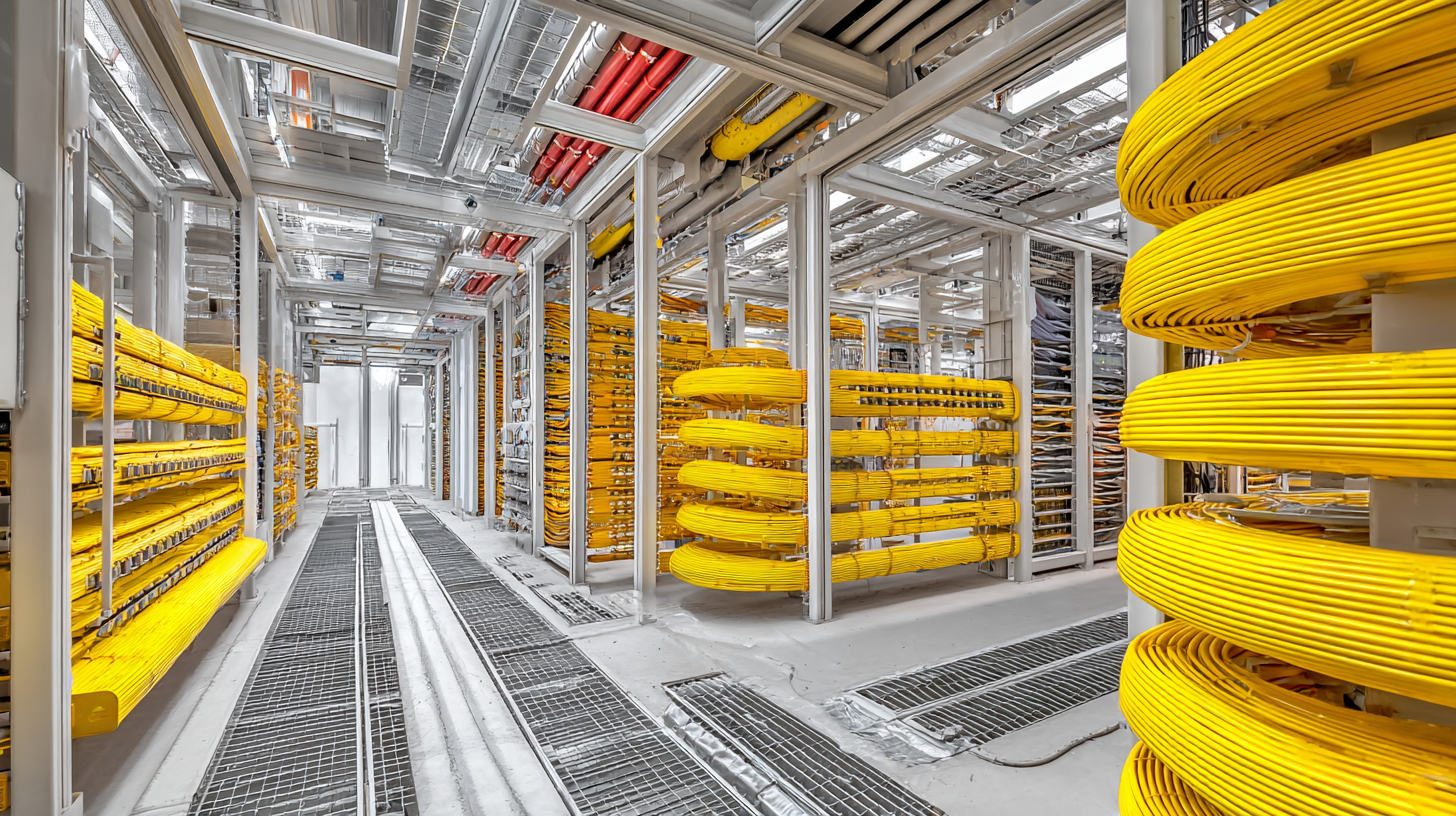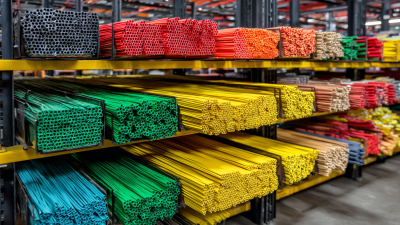Blog
5 Best Reasons to Choose Tray Cable for Your Next Project
In the rapidly evolving landscape of electrical installations, selecting the right cabling solution is paramount for ensuring efficiency, safety, and cost-effectiveness. Tray cable, designed for use in cable trays and raceways, has gained popularity due to its unique properties and ease of installation. According to the National Electrical Manufacturers Association (NEMA), the demand for tray cable is projected to increase by 25% in the next five years, driven by a surge in construction activities and a growing emphasis on energy management systems. Moreover, a report from MarketsandMarkets estimates the global market for tray cables will reach $4.8 billion by 2026, highlighting its rising importance in various sectors, including residential, commercial, and industrial applications. Understanding the advantages of tray cable can empower project managers and electrical engineers to make informed decisions that enhance operational performance and sustainability in their upcoming projects.

Benefits of Tray Cable: Cost-Effective Solutions for Modern Wiring Needs
When it comes to modern wiring needs, tray cable stands out as a reliable and cost-effective solution. One of the primary benefits of using tray cable is its flexibility; it can accommodate various applications, including power distribution and control systems in industrial settings. This adaptability not only streamlines the installation process but also reduces material costs since fewer types of wiring are necessary for different projects.
Additionally, tray cable is designed to withstand harsh environments, making it an ideal choice for both indoor and outdoor installations. This durability can lead to long-term savings as it minimizes the need for repairs or replacements over time. Furthermore, its lightweight construction allows for easier handling and installation, facilitating a quicker project turnaround.
This combination of resilience and efficiency underscores why tray cable is increasingly preferred for contemporary wiring projects.
Enhanced Durability: The Longevity of Tray Cables in Harsh Environments
Tray cables, designed to withstand the rigors of harsh environments, offer enhanced durability that makes them an excellent choice for various industrial applications. According to a report by the National Electrical Manufacturers Association (NEMA), tray cables are specifically engineered to resist moisture, chemicals, and extreme temperatures, which contributes to their impressive longevity. In particular, their robust construction typically includes multi-conductor design and lightweight yet resilient materials, allowing them to endure conditions that would quickly degrade standard cables.
In terms of performance, a study from the IEEE (Institute of Electrical and Electronics Engineers) highlights that tray cables maintain their electrical integrity even after prolonged exposure to elements such as UV light and corrosive atmospheres. As a result, businesses relying on electrical systems in manufacturing plants, outdoor installations, and other challenging environments can reduce downtime and maintenance costs significantly. Utilizing tray cables not only enhances operational efficiency but also ensures that projects meet stringent safety regulations, further solidifying their status as a top choice for professionals in the field.

Versatility of Tray Cables: Applications Across Various Industries
 Tray cables are increasingly becoming the go-to solution in various industries due to their remarkable versatility. One of the primary applications of tray cables is in industrial settings, where they are designed to withstand harsh environments and challenging conditions. Manufacturers utilize tray cables for connecting equipment and machinery, ensuring that operations remain efficient and safe. Their robust construction allows them to be used in both indoor and outdoor installations, making them suitable for factories, plants, and even construction sites.
Tray cables are increasingly becoming the go-to solution in various industries due to their remarkable versatility. One of the primary applications of tray cables is in industrial settings, where they are designed to withstand harsh environments and challenging conditions. Manufacturers utilize tray cables for connecting equipment and machinery, ensuring that operations remain efficient and safe. Their robust construction allows them to be used in both indoor and outdoor installations, making them suitable for factories, plants, and even construction sites.
In the commercial sector, tray cables are equally valuable. They connect systems in large buildings, such as hospitals, schools, and shopping centers. Their ability to support multiple conductors allows for streamlined installations and easier maintenance. Additionally, tray cables are employed in telecommunications and data transmission, facilitating reliable connections in data centers and network installations. This adaptability across diverse applications underscores the strategic advantage of choosing tray cables for projects that demand reliability and performance.
Safety Standards: How Tray Cables Comply with Industry Regulations
Tray cables are essential in various industrial applications due to their compliance with stringent safety standards. These cables are designed to meet the requirements outlined by organizations such as the National Electrical Code (NEC) and Underwriters Laboratories (UL), ensuring that they can withstand harsh environmental conditions while maintaining safety and reliability. This compliance is critical, as it assures users that the tray cables can handle the necessary voltage and current loads without posing fire hazards or electrocution risks.
Furthermore, tray cables are constructed with materials that provide excellent resistance to environmental factors such as moisture, chemicals, and extreme temperatures. This durability not only enhances their lifespan but also ensures they remain safe for use in diverse settings, from commercial buildings to outdoor installations. By adhering to industry regulations, tray cables minimize potential risks, giving project managers and engineers peace of mind when selecting wiring solutions for their projects.
5 Best Reasons to Choose Tray Cable for Your Next Project - Safety Standards
| Reason | Description | Compliance Standards | Usage Areas |
|---|---|---|---|
| Safety | Tray cables are designed to reduce the risk of electrical fires and accidents. | NEC, UL Standard 1277 | Industrial plants, buildings |
| Durability | They offer excellent resistance to chemicals and physical impact. | CSA, IEC Standards | Manufacturing, mining |
| Flexibility | They can be easily routed and installed in various configurations. | ASTM B800 | Construction sites, event venues |
| Cost-Effective | Lower overall installation costs due to simpler routing and reduced labor. | IEEE Standards | Various commercial applications |
| Versatility | Tray cables can be used in numerous industrial and commercial settings. | Nema Standards, ISO 9001 | Telecommunications, power distribution |
Installation Efficiency: Reducing Labor Costs with Tray Cables
When embarking on a new electrical project, one crucial consideration is the efficiency of installation. Tray cables emerge as a particularly favorable option, primarily due to their ability to significantly reduce labor costs. According to a report by the National Electrical Contractors Association (NECA), using tray cables can lead to a labor cost reduction of up to 30% compared to traditional wiring methods. This is largely attributed to their design, which allows for faster installation with less overall complexity.
Furthermore, tray cables are often lighter and more flexible than conventional cables, enabling easier handling and reducing the time spent on site preparation. A study published in the Journal of Electrical Engineering found that projects utilizing tray cables can achieve installation speeds that are 20% faster, thanks to the reduced need for additional support structures and the elimination of cumbersome conduit runs. This added efficiency not only accelerates project timelines but also minimizes potential onsite delays, thus delivering projects on time and within budget. The adaptability of tray cables to various installation environments further enhances their value, making them a wise choice for electrical contractors aiming for cost-effective solutions.
5 Best Reasons to Choose Tray Cable for Your Next Project
The chart above illustrates the importance ratings of various reasons for choosing tray cables in construction projects. Installation efficiency stands out with a score of 9, underlining its significance in reducing labor costs.
Related Posts
-

Quality Tray Cables from China: Elevating Global Standards with Exceptional Manufacturing
-

How to Select the Right Tray Cable for Your Electrical Installation Needs
-

Understanding the Challenges of Wire Cable Tray Systems: Insights and Solutions from Industry Experts
-

Ultimate Guide: How to Select the Right Flexible Cable Tray for Your Industrial Needs
-

Exploring Innovative Alternatives to Traditional Cable Tray Wire Systems
-

Top Tips for Selecting the Best Cable Tray Wire Manufacturer for Your Needs
Exclusive Access
Unlimited Resources
Detailed information on our products to assist you with the planning of your cable management project
Register Now